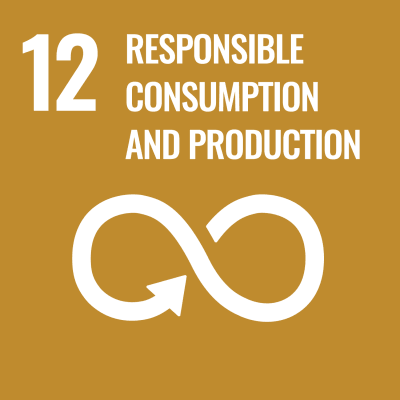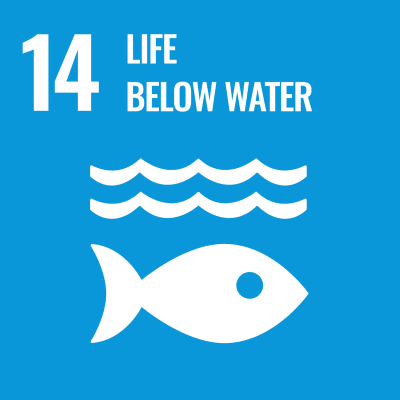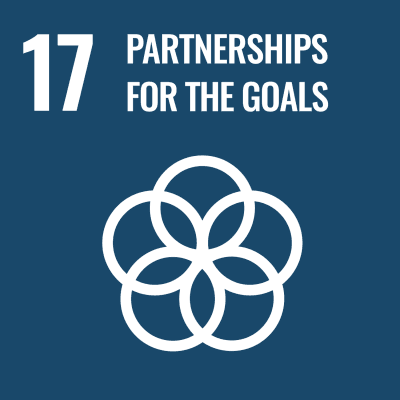-
Faculty of Life Science, Department of Medical Technology
- Professor
- Hideaki OBATA
- Research Field
Clinical Engineering, Biomedical Measurement
- Keyword(s)
ECMO, PCPS, ECMO、ECG, EMG
- Research theme
-
- Study on effects of heartbeat in an infant extracorporeal circulation
- Study on influence that a gel nail gives to a pulse oximeter
- Study about the electrocardiogram measurement with two points of electrodes
- Study on effects of a corset
Outline of research activities
I think that it is only “a clinical engineer” basically that they can call it an engineer in clinical situation. I improve a medical device used in an operating room or an intensive care unit by technique of the engineering. I want to promote this study that can suggest better medical care.

A Non-pulsatile flow pump is used mainly now in a clinical scene. However, a pulsatile pump is reviewed recently. It is a field of the neonate in particular. Therefore I tried that I developed the pulsatile flow monitoring system which was effective in a heartbeat. I aim at the development of the system for this usability test.- Desired cooperation
-
- biomedical measurement
- measurement on biological functions of living organisms
- medical device development
-
Faculty of Life Science, Department of Medical Technology
- Professor
- Junya HORI
- Research Field
Clinical Engineering, Safety Management of Electro-Medical Equipment, Medical Education
- Keyword(s)
Defibrillator AED, electrocautery, blood purification therapy, Basic Life Support
- Research theme
-
- Safety evaluation of high-energy devices such as defibrillators and electrocautery
- Development of various sensors for blood purification
- Development of various educational tools for medical education
Outline of research activities

(1) Many medical devices that use electricity, such as defibrillators, AEDs, and electrocautery, are used in the medical field. If these devices are not used properly, they can cause electric shocks and burns. In this study, we investigate the electrical hazards associated with improper use of these devices.
(2) It is important to obtain information on patients noninvasively in blood purification therapy. We are developing and improving sensors such as urea sensor using chemiluminescence.
(3) In training clinical engineering technicians, it is necessary to provide various practical training, but it is not possible to use actual patients. Therefore, we are developing educational materials for practical training that can be used in place of living bodies. We are also developing educational tools that can be used in primary life saving seminars for the general public.

- Desired cooperation
-
- Development of safety evaluation devices for medical electrical equipments
- Development of educational devices for medical education
-
Faculty of Life Science, Department of Medical Technology
- Professor
- Ken KATAOKA
- Research Field
Cell Biology, Regenerative Medicine
- Keyword(s)
Cell Culture, 3D culture, Spheroids
- Research theme
-
- 3D culture of tissue stem cells
- Artificial control of spheroid formation
- Assessment system of cell culture techniques
Outline of research activities

Epithelial cells in spheroids formed through three-dimensional culture exhibit a quiescent state. Our research aims artificial interventions to control cell proliferation and differentiation during spheroid formation. Additionally, aiming for the standardization of cell culture techniques, we are advancing the development of a assessment system utilizing recorded videos.

- Desired cooperation
-
- Assessment system of cell culture techniques
-
Faculty of Life Science, Department of Medical Technology
- Professor
- Naoya HASHIKAWA
- Research Field
Molecular biology, Neuroscience
- Keyword(s)
Brain function, Gene expression, Protein misfolding
- Research theme
-
- Research on mechanisms of mental disorders
- Roles of molecular chaperones in various disease
- Role of molecular chaperones in memory and sensation
Outline of research activities
Proteins exert their functions by adopting specific three-dimensional structures. Molecular chaperones are known to be involved in the process of achieving proper protein folding, which is crucial for the formation of these three-dimensional structures. We are focusing on a specific molecular chaperone known as heat shock protein and investigating its role in the brain. Through our research, we have revealed a connection between heat shock protein and depressive-like symptoms. Currently, we are further expanding this research to explore the relationship between depression and protein misfolding abnormalities.
Additionally, we are studying the impact of heat shock protein expression on memory, sensation, as well as its effects on allergies such as rhinitis.

- Desired cooperation
-
- Evaluation of the physiological and molecular biological effects of novel substances
- Development of novel therapeutic approaches using disease model mice
- Gene expression analysis
-
Faculty of Life Science, Department of Medical Technology
- Professor
- Narumi HASHIKAWA
- Research Field
Pharmacology
- Keyword(s)
CGRP, Neuroscience, Behavioral neuropharmacology, Atherosclerosis
- Research theme
-
- Effects of CGRP on fear memory in mice
- Effects of CGRP on atheroscrelosis in apoE-/- mice
Outline of research activities1. We investigate the role of calcitonin-gene relate peptide (CGRP) which is a potent peptide vasodilator and can function in the transmission of pain on mice behavior. Recently, we have demonstrated that intracerebroventricular administration of CGRP induced anti-depressant effect in 15-day restraint stressed mice. This anti-depressant effect is associated with a massive nerve growth factor production in hippocampus. We are now investigating whether the fear memory associated with the exogenous CGRP in mice.
2. We also exploring the effect of CGRP on atherosclerosis in apoE knockout mice which has on CGRP. ApoE knockout mice, which develop atherosclerosis lesion in short time.

- Desired cooperation
-
- Several animal model, depression, arteriosclerosis and type II diabetes are available in our laboratory. We are appreciate to explore novel substances with these animal model.
-
Faculty of Life Science, Department of Medical Technology
- Professor
- Noriaki MATSUKI
- Research Field
Medical Engineering
- Keyword(s)
Blood Oxygenation, Oxygen Microbubble, Micro Particle, Cancer, Apoptosis
- Research theme
-
- Developing of the oxygen supersaturated infusion solution with micro-nano bubbles.
- Developing of the oxygen supersaturated infusion solution with micro-nano particles.
- Study of mechanism of cancer cell apoptosis.
Outline of research activities
Microbubbles have unique properties, existing stably for a long time, shrinking and disappearance (shrinking collapse) in a liquid to produce a gaseous supersaturated solution, and generation of hydroxyl free radicals. On the other hand, in the medical field, respiration and circulation management is given top priority, and oxygen administration and venous infusion routes are routinely carried out. Therefore, focusing on the property of the microbubble shrinking collapse phenomenon, if we can create an oxygen supersaturated infusion solution which directly oxygenate the blood, we can easily manage respiratory and circulatory conditions at the same time, which can be widely used for general treatment in various situations. Normally, when air bubbles are infused the blood, a thrombus is formed, which is dangerous and causes thromboembolism (infarction of the heart, lungs, brain, etc.). However, fine oxygen microbubbles that can easily pass through the thrombus removal filter (20-40㎛) of the CPB(cardio-pulmonary bypass) will naturally shrink and disappear (shrinking collapse) due to the nature of the microbubbles, so theoretically, thrombus can be eliminated. Therefore, the risk of embolism is small and considered safe. In the past, we have demonstrated that oxygen microbubble solutions with a diameter of 10 µm or less can be produced and the blood can be directly oxygenated. Furthermore, by combining a pressurized nozzle and ultrasonic waves, fine oxygen microbubbles with a diameter of 1.5 µm or less were produced in physiological saline, demonstrating the possibility and usefulness as an infusion solution. As for the application of the oxygen supersaturated infusion solution, it is expected to be used for emergency situations such as cardiopulmonary arrest, hypoxemia (pneumonia, respiratory failure, heart disease etc.), and ischemic diseases (myocardial/cerebral infarction, etc.). In general, chemotherapy and radiation therapy are known to induce cancer cell apoptosis and enhance their antitumor effects when they are placed in a hyper-oxygen state. If the oxygen supersaturated infusion solution are used in combination with anticancer drugs, the dose of anticancer drugs with strong side effects can be expected to be reduced, and the dose of antibiotics for infections (sepsis) can also be expected to be reduced.
- Desired cooperation
-
- Invention of the oxygen supersaturated infusion solution with micro-nano bubbles and particles.
-
Faculty of Life Science, Department of Medical Technology
- Professor
- Seiichi KATAYAMA
- Research Field
Bacteriology, Bacterial Molecular Genetics
- Keyword(s)
Clostridium perfrigens, Regulation of Production of a-toxin, Fibronectin-binding Proteins, Pili
- Research theme
-
- Effect of phased A-tracts sequence on a-toxin production.
- Identification and functional analysiss of Clostridium perfringens fibronectin-binding protein.
- A study of novel pili in Clostridium perfringens.
Outline of research activities
Clostridium perfringens is a bacterium that causes gas gangrene and food poisoning. a-toxin (phospholipase C) is a pathogenic factor in gas gangrene. We showed which amino acids in the C-terminal domain of the αsubunit (αCTD) of RNA polymerase interact with the phased A-tracts DNA upstream of the promoter of a-toxin gene. The autolytic enzyme autolysin of C. perfrignes was identified as one of the fibronectin-binding proteins. In addition, through joint research, we were able to determine the three-dimensional structure of CppA, a pili-constituting protein.

- Desired cooperation
-
- Three-dimensional structure analyses of the phased A-tracts DNA and the fibronectin-binding proteins, and analysis of immuno-electron microscopic images of the pili,etc.
-
Faculty of Life Science, Department of Medical Technology
- Professor
- Takayoshi KIBA
- Research Field
Gastroenterology, Oncology
- Keyword(s)
Visceral organs, Regeneration, Proliferation, Carcinogenesis
- Research theme
-
- Identification of new nerve-delivered growth factor regarding pancreatic B cells.
Outline of research activities

We found that vagal hyperactivity produced by ventromedial hypothalamic (VMH) lesions stimulated cell proliferation of rat pancreatic islet B through a cholinergic receptor mechanism. Previously, we developed a new technique regarding high-quality RNA extraction from rat pancreas for cDNA microarray analysis, and thereby, we found that VMH lesions may change the expression of cell proliferation-related genes and neuron-related genes in a rat pancreas, using DNA microarray and real-time polymerase chain reaction. We believes that these new gene network analysis will lead to Diabetes MellitusTreatment or Pancreatic Cancer.

- Desired cooperation
-
- R & D regarding regeneration and proliferation of pancreatic B cells
-
Faculty of Life Science, Department of Medical Technology
- Associate professor
- Daiki OUSAKA
- Research Field
Pharmacology, Cardiovascular Surgery, Biomedical Information Science
- Keyword(s)
Genome Editing, Zebrafish, Blood Products, Data Science, Diamond-like Carbon
- Research theme
-
- Drug discovery and disease target molecule identification using a combination of Data Science × Genome Editing (CRISPR) × Zebrafish
- Development of biosensors for real-time sensing of biomolecules in vivo
- Development of medical coatings utilizing carbon-based thin films
- Technology development for ensuring the health and safety of agricultural workers
Outline of research activities


・Drug Discovery and Target Identification
Human plasma contains over 3,000 proteins, yet less than 20 are used in current blood products. To discover novel therapeutic candidates, we integrate Data Science, CRISPR-based genome editing, and zebrafish models—focusing on neurological diseases and congenital heart defects.・Medical Coating Development
Medical devices such as catheters and artificial blood vessels require high biocompatibility and antimicrobial properties. We are developing novel coatings using patented Diamond-like Carbon (DLC) technology, aiming for improved safety, tissue regeneration, and real-time biosensing functionality.・Health and Safety in Agriculture
Agricultural workers face a significantly higher risk of fatal accidents. Our work focuses on long-term health monitoring and accident prevention, using data-driven approaches and bio-design strategies in collaboration with industry, academia, and government.- Desired cooperation
-
- Life science research utilizing zebrafish
- Development of biosensors for real-time sensing of biomolecules in vivo
- Technology development to support health and safety management of agricultural workers (e.g., systems for heatstroke prevention, accident mitigation, and behavior modification)
-
Faculty of Life Science, Department of Medical Technology
- Associate professor
- Nozomu MATSUNAGA
- Research Field
pathogenic microorganisms,
- Keyword(s)
Host-pathogen interaction, adhesion molecule, wound healing
- Research theme
-
- The effects of <i>Clostridium perfringens Fibronectin-binding proteins (Fbps)
- The interaction of dermatopontin with Fbps
- Role of peptidoglycan hydrolase in Fbps
- The affects of Fbps on wound healing
Outline of research activities
Infectious diseases caused by bacteria begin with the attachment (Binding) of bacteria to the host. We use <i>Clostridium perfringens</i>, one of the pathogenic bacteria, as wound infection model. We are studying host-pathogen interaction from the following viewpoints.
1. Interaction between fibronectin and fibronectin binding protein (Fbps) of <i>C. perfringens</i>
2. The effect of Fbps on dermatopontin (DPT)-induced fibronectin fibrosis.
3. Fbps functions as a peptidoglycan hydrolyzing enzyme
4. The effect of Fbps on wound healing

- Desired cooperation
-
- The development of novel antibiotics by applying <i>C. perfringens Fbps
- Application of <i>C. perfringens Fbps to dermatopontin-induced tissue injury
-
Faculty of Life Science, Department of Medical Technology
- Lecturer
- Kiyoshi MATSUMIYA
- Research Field
Computer Aided Surgery
- Keyword(s)
Medical system, threaputic device
- Research theme
-
- Attentive endoscopic maneuvering system
- Monocular endoscpic depth measurement system
- Therapy support systems
Outline of research activitiesWe are developing and researching systems and devices that support treatment. Our basic approach is to develop products that operate with mechanical and electrical mechanisms such as robots and manipulators. I am interested in researching systems and devices that read human movements and biological signals in some form and operate or are controlled based on these.
- Desired cooperation
-
- Development of medical systems and devices
- Development of systemens and devices that operate based on human movements and and biological signals acquisition
-
Faculty of Life Science, Department of Medical Technology
- Lecturer
- Satoshi TOMIYASU
- Research Field
Nephrology, Tumor Biology
- Keyword(s)
Round cell, Stem cell, microRNA、Endmetrial cancer
- Research theme
-
- Investigation a novel renal function assessment using round cells as an indicator and to elucidate the mechanism of tubular lumen regeneration
- Identification and functional analysis of specific microRNAs for early diagnosis of endmetrial cancer
Outline of research activities
・Investigation a novel renal function assessment using round cells as an indicator and to elucidate the mechanism of tubular lumen regeneration.
Since round tubular epithelial cells (round cells) are rarely found in urine and are neglected in daily clinical examinations, we aim to clarify the significance of their appearance and their relationship to disease. The round cells may be stem cells, and we hope to elucidate the process of tubular lumen regeneration and the cells from which they originate.・Identification and functional analysis of specific microRNAs for early diagnosis of endmetrial cancer
We aim to identify microRNAs that can serve as biomarkers for early detection of endmetrial cancer and to detect them in blood samples. Furthermore, we will analyze the functions of microRNAs expressed in endmetrial cancer and clarify their molecular biological characteristics.- Desired cooperation
-
- Research on round cells and endmetrial cancer in clinical samples
-
Faculty of Life Science, Department of Medical Technology
- Assistant professor
- Kazunori TAKEMOTO
- Research Field
Clinical Engineering Biochemistry Dermatology
- Keyword(s)
Aging , Oxidative Stress, Photoaging
- Research theme
-
- Skin aging and hydrogen peroxide
- Skin Pigmentation
Outline of research activities
Using skin cells, I investigate how oxidative stress in vivo is involved in aging.
I also conduct research related to antioxidants and skin pigmentation, which is relevant to the development of new treatment and testing methods, beauty devices and cosmetics.- Desired cooperation
-
- Oxidative stress
- Aging stress














